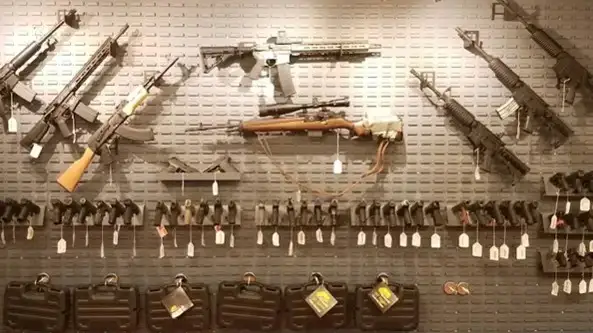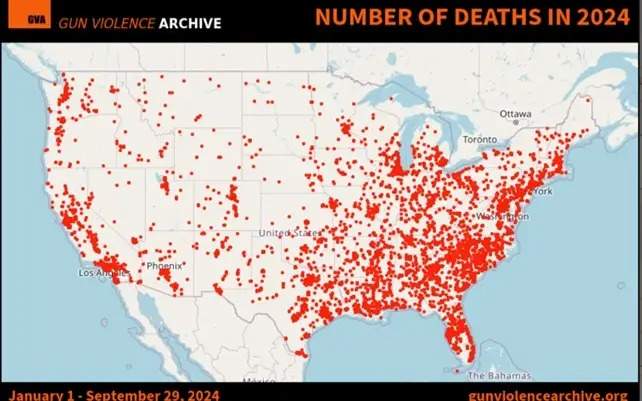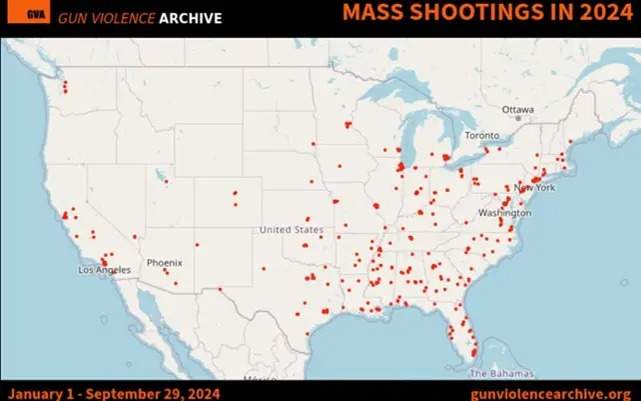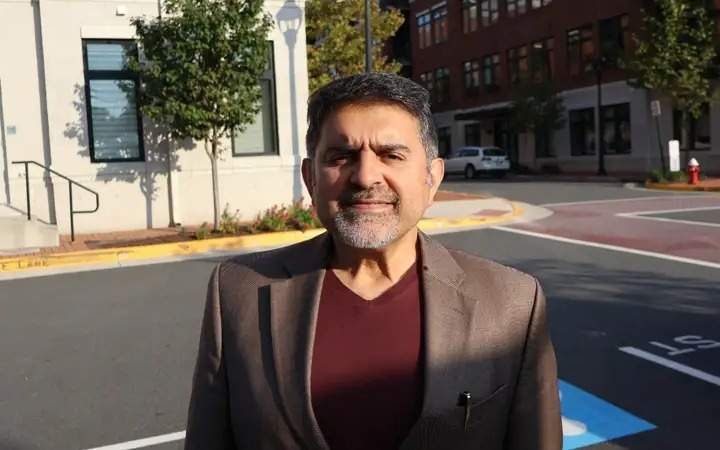The open carry of firearms in the USA– who benefits?
The United States continues to experience a high level of gun violence, including a specific category in statistics - mass shootings. This year alone, more than 400 cases have been recorded. Why is this happening and how can this problem be solved? Kazinform News Agency correspondent investigates.

Mass shooting statistics
As of September 29, 12,735 people have been killed by gunfire in the U.S., and 24,403 others have been injured.

There have been 408 mass shootings in the country since the start of 2024. A mass shooting is defined as an incident where four or more people are injured or killed.
In September alone, there were 34 mass shootings across 24 states, with Illinois recording four incidents in a month, and Alabama, New York, Pennsylvania, Texas, and Ohio each experiencing three mass shootings.

According to data from the Gun Violence Archive, from 2014 to 2023, the number of deaths from firearms increased 3.5 times, from 12,386 to 43,197, and the number of injuries nearly doubled, from 22,175 to 36,547 people.
From 2014 to 2023, the number of mass shootings increased 2.5 times, from 272 to 656 incidents.
The deadliest attack of this kind occurred in Las Vegas in 2017, claiming the lives of over 50 people and injuring 500 others. However, in the vast majority of mass shootings, fewer than 10 people are killed.
According to the Small Arms Survey, in 2018, there were 390 million firearms in circulation in the U.S., while the population stood at 326.8 million people (as of 2018).
It is evident that these figures have increased over the last six years. From January 2019 to April 2021 alone, 7.5 million adults in the U.S. became new gun owners, according to a study published in the academic medical journal Annals of Internal Medicine.
Who supports gun control in the country
The majority of Americans support gun control. According to a Gallup poll, 56% of surveyed Americans want stricter gun laws, 31% support the current laws, and 12% believe the laws should be less strict.
This issue causes significant political division. For instance, Democrats are almost unanimously in favor of stricter gun laws. In contrast, only 24% of Republicans and 45% of independent voters agree with that position.
Gun laws vary by state. For example, three states—Minnesota, Virginia, and Washington—regulate but do not ban assault weapons, while nine states and Washington D.C. (California, Connecticut, Delaware, Hawaii, Illinois, Maryland, Massachusetts, New Jersey, New York) have implemented an assault weapons ban.
The gun lobby in America
The National Rifle Association (NRA) remains the most influential gun lobby in the United States, with a significant budget to influence members of Congress on gun policy issues. Some states have greatly reduced restrictions on firearms. For instance, in June 2021, Texas, and in April 2023, Georgia, passed laws allowing residents to carry handguns without a license or training.
As previously noted, despite the right to own firearms, the safety level in the U.S. remains low. The Global Peace Index 2023, conducted by the international think tank Institute for Economics and Peace, ranked the U.S. 131st out of 163 countries in terms of safety.

According to Kamran Bokhari, Senior Director for Eurasian Security and Prosperity at the “New Lines Institute for Strategy and Policy” in Washington, the key issue is not whether the population should have guns or not; the difference between Democrats and Republicans lies in what policies should be implemented.
The expert explained that the right to bear arms is enshrined in the Second Amendment of the U.S. Constitution. To change something at the legislative level, a law would need to pass in Congress with the support of two-thirds of the votes, which, given the polarization between Republicans and Democrats, is nearly impossible.
Bokhari believes that different gun laws are needed for urban and rural populations.
“In cities, there are more police officers, so the population does not need powerful assault rifles. However, in rural areas, where law enforcement is limited to a sheriff and deputies, there is a risk that they may not arrive at the scene of a crime in time,” Bokhari explained.
In his view, any decision regarding firearms requires political compromise, which will be very difficult to achieve given the current polarization in the country.
“It’s not about the gun lobby, but about how people feel. If this were purely a legal issue, the public would have demanded an end to gun violence in public spaces, and the gun lobby wouldn’t have the same influence, as the vote is ultimately in the hands of the people,” the expert noted.
Bokhari is convinced that gun manufacturers will not be able to do much if public opinion changes.
“The question isn’t about the right to own guns or not, but about what kind of weapons Americans should have,” he emphasized.
In his opinion, there is no need for powerful assault rifles for civilians in urban areas, where there are sufficient law enforcement resources, as the primary goal is self-defense.
He suggests that restrictions on the type of firearms allowed in cities could be introduced, but these initiatives would involve limiting gun ownership, which contradicts the U.S. Constitution.
Another issue is access to firearms by people with mental health problems. In this regard, stricter requirements for purchasing firearms, such as tests or medical evaluations, should be implemented. Currently, the U.S. already has background checks in place to verify criminal records, but additional measures may be needed.
